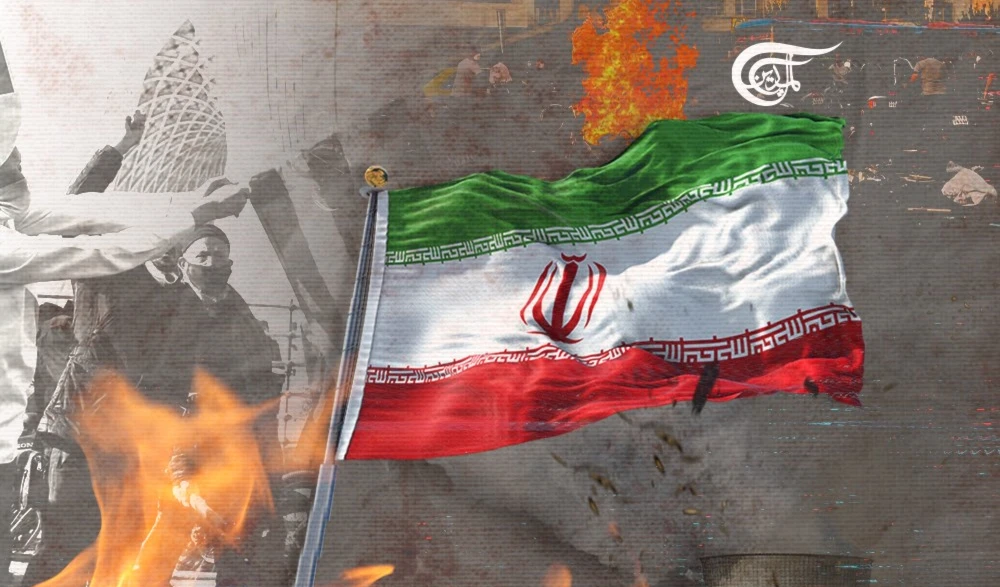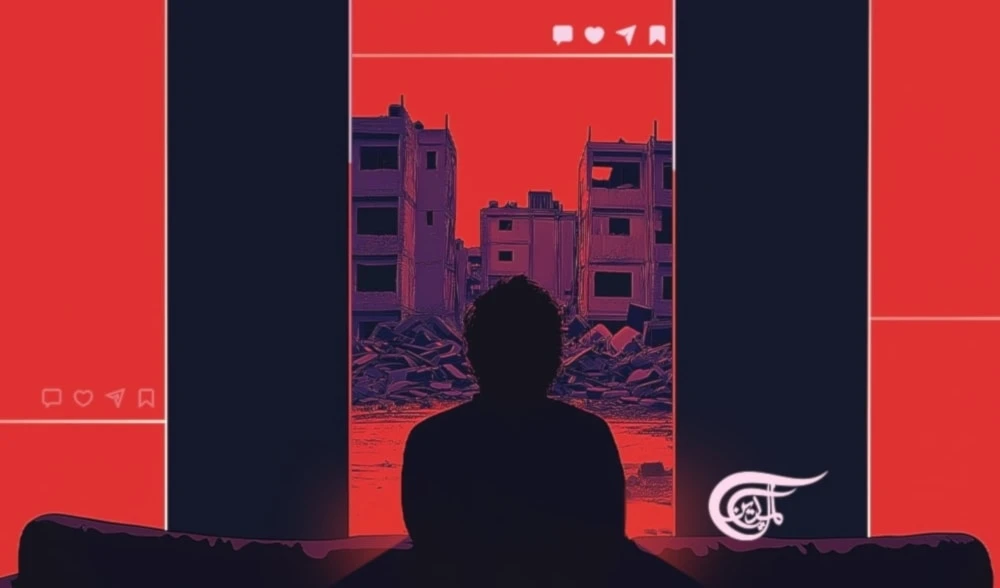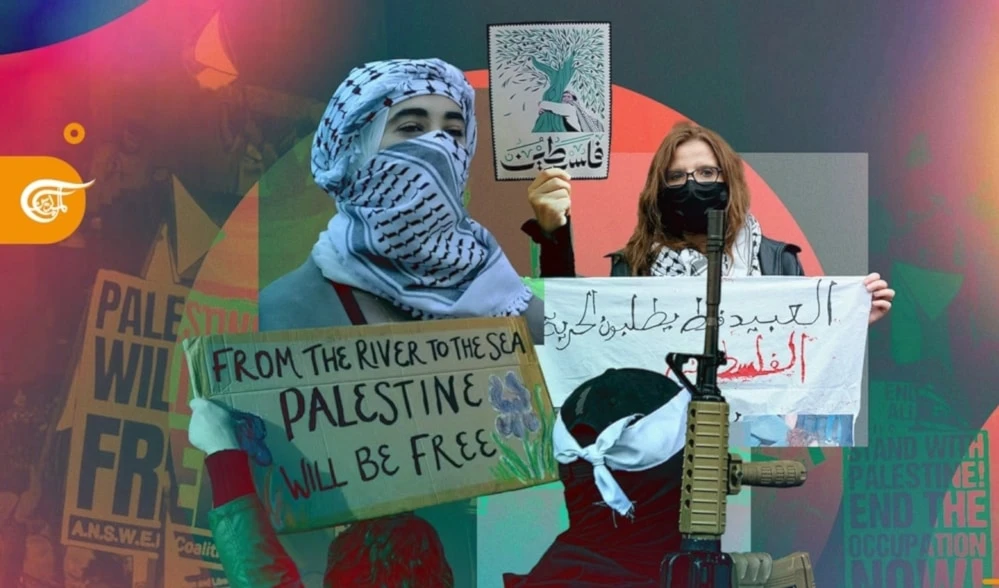Disinformation campaign targeting Iran over Mahsa Amini's death
The media disinformation campaign regarding the death of Mahsa Amini and the amplification of the reaction on the streets of Iran can be traced back to several platforms, on top of which are Twitter and TikTok.
-

Iran and the media disinformation campaign on Mahsa Amini's death.
At a time when the world has made a huge leap in communication technology and the ability to share a large number of photos and videos within moments, many political parties in the world and their media arms rushed to exploit this development to serve their agendas.
After the so-called "Arab Spring" passed its 10-year mark, it became clear that it is possible to directly transmit destabilization presented in fabricated photos and outdated videos in virtual reality onto the real world. It has become apparent as well that certain media outlets are directed to cover any event in Russia, China, and Venezuela, for example, to aggravate these countries and induce change.
Iran, due to its independent nature- an undesirable trait dubbed by Western regimes, is not far off this type of targeting. The media-provoked campaign regarding the death of the young Iranian woman Mahsa Amini is just one example. The course of disinformation regarding the event itself and the media amplification of what is happening in the streets of Iran can be traced to a number of platforms, on top of which is Twitter, which is characterized by a relatively focused pouring of political content.
Twitter: Exaggeration and fabrication
When searching for the name of Mahsa Amini during the first days of the protests, and based on the results of Talkwalker, one can find that the number of tweets about this event was in the millions, but the engagement, however, was relatively low in comparison.
Yet, what is more remarkable is that the number of accounts that tweeted about the topic itself did not exceed 450,000, according to Talkwalker. This indicates that specific parties tried to amplify the event and ensure its widespread to enforce a reaction to it, virtually and in the real world.
Upon analyzing this data, it can be revealed that the accounts that bore the responsibility of promotion were mostly newly established accounts and had no previous activity on Twitter. This suggests that the accounts were designated exclusively to what was happening in Iran, or perhaps were created a short time earlier, in preparation for something similar. Studying 60,000 sample tweets, data showed that 8,343 accounts were just created in September.
Similarly, thousands of accounts from that same sample were created in August (about 3,453 accounts). The purpose of these accounts could be traced back to the fact that they had zero tweets prior to the recent events in Iran.
The tide of disinformation on Twitter relied on a number of repeated patterns, including focusing on opposition activists located outside Iran to gain some kind of "credibility" in perspective to the Western eye. Their Persian language also served to attribute a large amount of content to Iranians, claiming they are Iranian accounts tweeting from within Iran, while publishing a number of old videos, knowing that their audience will not be able to verify the original date of publication.
With the aim of amplifying and falsifying the event for political purposes, a number of media outlets did not even carry out the minimal verification process to check for the authenticity of the content. Perhaps, they did so with the full and deliberate intent of fabrication. For example, some media outlets shared news about protests taking place in 50 Iranian provinces, however, there are only 31 provinces in Iran!
Another example is the video that was circulated and promoted as being the moment the young woman Mahsa Amini was arrested, which turned out to be an old video that was published last May. Also, with the purpose of engraving the term within the consciousness of the recipients, western media tried to promote the term "eastern Kurdistan", in an effort to promote conflict amongst different parties within the Iranian society and provoke sedition. This is no different from what the same media outlets did in Sudan, as well as in the Kurdish regions of Syria and Iraq, relying on the same tactic.
Another striking example is the use of maps by a number of accounts to imply that the protests are covering a wider geographical area than they actually do, similar to the maps that were circulated during the war on Syria and were used to display territorial control by terrorist organizations, as part of the psychological war on the Syrian army and Syrian citizens as well. Publishing these maps in such matter relays impressions rather than real information, especially for the Western public that treats them as a source of information, not as deliberately-planted material.
The accounts that were handled by specific entities, in conjunction with the media activity of major outlets in the West, tried to use the death of Mahsa Amini as the spark of what they described as a "revolution", as if they were trying to reproduce the image of Tunisia's Bouazizi. This was the same image that they tried to perpetuate with Navalny in Russia, as we find terms like major protests and massive demonstrations employed in news articles, repeatedly.
On the other hand, Israeli accounts were quick to spread misleading news claiming that Hezbollah members went to Iran to "suppress the demonstrators". This misleading propaganda is similar to Hezbollah backing and fighting with the Russian army in the war in Ukraine, based on misleading information and fake photos and videos.
These Israeli accounts seek to distort the image of Hezbollah and the Islamic Republic at the same time, as evidenced by the use of old videos that have nothing to do with the Islamic Republic, but with Lebanon. It can also be witnessed that a large number of Israeli accounts recommended following certain accounts and activists claiming to be Iranian on social media platforms, and inviting followers to rely on them to access news and information.
Per the campaign on Twitter, the most politically charged social media platform, Tiktok was not any different, though some believe that it is not of interest to those concerned with this type of disinformation.
TikTok: Targeting teenagers and exploiting the absence of a news source
In the last few years, one could observe the popularity of TikTok among the youth. This platform has become the primary search engine for zoomers when accessing content and news. Content is basically related to challenges that motivate teenagers to perform certain tasks and to "jump on the trend". This was also exploited to instigate the young generation against Iran through videos mixed with songs and slogans, with no reference whatsoever to a certain specific source, and relying on the recycling of these videos and their rapid dissemination.
On TikTok, they mainly depended on beauty and fashion Western influencers hostile to Iran and have nothing to do with the world of news and content; most of what they publish is related to the world of fashion and cosmetics.
They also made the most use of influencers in different genres to reach a larger audience without diving into the actual source. For example, a fashion page managed to garner 200,000 likes for a post calling on activists to cut their hair and take off their hijabs, "in solidarity" with the fabricated events unfolding in Iran.
Among the triggering videos that were widely circulated by important news outlets in the United States, there were a number of audios belonging to Iranian opposition activists, whose photos with Mike Pompeo were published on official US websites. In an additional preview of the terms used by the activists, one can recount a set of phrases that illustrate bias and the imposition of a one-sided narrative while obscuring the other, linking the issue exclusively to the Iranian "morality police".
Therefore, we can talk about real disinformation, because the videos that circulated on this platform do not allow users to understand what happened; there is no context, no news from real sources, not even a documentation that helps understand what is happening.
Western media... Longing for a moment of turmoil in Iran
It is no secret that Western media generally awaits a moment or an event in Iran that can be politically exploited and turned into a "decisive moment". According to the results generated by Spike, one can observe the significant volume of published content regarding the death of the young woman Mahsa Amini; in just one week, 1,504 articles were published in the United States. CNN alone published 15 articles within a few days.
The case was no different in the UK, where within 9 days, 720 articles had been published. An article titled "Iranian woman dies after being beaten by morality police over hijab law", published by The Guardian, garnered 15,200 views and impressions, despite the online circulation of a video documenting that Mahsa was not subjected to physical assault.
The articles and news pieces in Western media were swamped with disinformation, though they usually avoid relying on false information in their fabrication campaigns and opt to employ more sophisticated tools, such as switching paragraphs in texts and obfuscating certain ideas, facts, and information. However, in Iran's case, their overpowering desire to provoke unrest prompted outlets to adopt this method, including talking about the killing of 50 women on the eighth day of the protests and pivoting the original nature of the protests into calls against the Islamic law itself.
As for the countries of the European Union, the number of articles published between September 16 and 24 per country is as follows: Germany: 830, France: 655, Spain: 297, Italy: 497, and the Netherlands: 134. It is noteworthy to mention that the number of published articles that include the following terms: "Iranian woman/women" or "women's rights in Iran" during the past week exceeded 8,000 in the United States and the European Union.
Here, we were exclusively talking about articles. However, the greatest impact was achieved by converting the amplified content and one-sided narratives into stories circulated on social platforms to reach younger generations that usually depend on those social media platforms to attain their news updates.
In addressing the Iranian issue, Western media attempts a mixture of disinformation and double standards. As it spreads disinformation regarding the death of Amini, real cases in other countries are obscured, only because the other cases do not serve the US agenda or harm its image or the image of its allies.
Media and forgotten women
While anti-Iranian media devoted massive and intensive coverage and huge amounts of money to promote special content aimed at serving its policies, it deliberately chose not to cover the mass demonstrations in support of the Islamic Republic that spread to most of the country's provinces.
On the other hand, we would not have been surprised by such behavior by the Western media outlets and how they handled this event if we monitor the way they operated in similar events, for example:
* Zainab Al-Khazali, who was shot dead by US forces in Iraq: less than 100 articles have been written about her (including articles by some Arab websites that used the news to target Iraqi factions and accuse them of exploiting the event without even demanding an investigation).
* Zahra Kaddi: an Iranian football player who was massively bullied worldwide on social media. Ninety days following the incident, it reached less than 1000 Arab and international news coverage (most of which were inciting against Iran, accusing it to be using illegal methods according to the laws of football).
* Khamis Mushait orphans: Only 86 news in Arabic language and 20 in English covered the abuse of girls living in an orphanage in Saudi Arabia (which only happened after the audience of these outlets put them on the spot).
Corporate collusion from Wikipedia to social media platforms
Experts and researchers understand that the information published on Wikipedia is neither scientific nor accurate, and it cannot be relied upon without confirmation from official sources with higher credibility. However, despite this fact, the platform remains one of the primary sources to access information, especially for millennials.
For many social media users whose timelines were flooded with content related to Iran, they were triggered to understand the reality of what is happening or ask questions to help them understand the context of the material they viewing.
In any normal Google Search, Wikipedia will appear at the top of the results page, and thus will be a source for the user to formulate an opinion, based on a systematic narrative directed against Iran.
Wikipedia immediately set up a page to the incident on its website, titled: "the killing of Mahsa Amini". The page stated that "the murder of Mahsa Amini was an incident that occurred on September 16, 2022, in Iran's capital Tehran, when a young Iranian woman called Mahsa Amini died after being arrested by the morality police of the Iranian government."
The information published on Wikipedia feeds other platforms which the new generation resorts to without verifying its authenticity from other sources or from people informed on the subject or from the real actual narrative. Here, we can understand the dynamics to control the narratives and possess minds and how to steer public opinion in a soft and subtle way.
On the other hand, we find that media platforms -- that issue periodic reports on publishing policies and combating disinformation and violent content -- allow the promotion of everything that is hostile to Iran and aims to distort its image, even if it opposes its publishing policies. Alongside this trajectory of disinformation, these platforms, and through their propaganda campaigns, block content that does not serve the interests of these applications, such as the content published by or promoting anti-US-imperialist Resistance movements.
The statements of the American billionaire Elon Musk, who recently offered to purchase Twitter, confirm this association between the US establishment and big-tech companies. Musk wanted to "help" the Iranians by providing internet services via satellite.
Musk can not care less that more than a third of the world's population is unable to access the internet. Also, he and his colleagues did not care that the US blockade on Iran, just a few months ago, denied millions of Iranians access to basic and vital medical equipment to combat the pandemic.
Iran and the systematic neglect of data
The Western media rarely touches on the subject of development and progress in Iran, especially when it comes to the participation of women in the political, social, and cultural arenas. This is evident through the withholding of statistics that reveal the increase in the number of women attending schools and universities - or the deliberate delay of the publication of such news in case it was ever published - as well as not bringing up the increase in women's participation in various domains and Iran's progress at the global level in some industries and areas.
Western media, and through disinformation, wanted to invest in the death of Mahsa Amini to create turmoil in Iran by transferring the imagined event in virtual reality onto the streets of Iran. Western media aims to depict Iran as a society in which women's contributions are non-existed; yet, this could be combated by many competent statistics.
Real statistics are displayed in the Iranian media and in the Persian language, which is obscured in Western media outlets, Even though there are hundreds of websites specialized in tracking statistics and figures from all over the world, which allow margins for specific tailored topics. However, they do not cover topics and files that may harm their interests, policies, and projects. The narratives that are promoted to their audience remain exclusive, especially with the difficulty of the Western audience accessing Iranian content.
The following are some documented data that shows the extent of the impact of the role of women in Iranian society: 60% of students in the country are women. In 2015, 70% of science and engineering students were women. While in 2016, 49% of doctors in Iran were women, and the number of women in Parliament exceeded the number of religious scholars that same year.
Today, 8,000 authors and writers are Iranian women, with 712 publishers, up from 0 before the Islamic revolution. Iranian women have won 160 international medals at international and world competitions and have 35,000 sports coaches, with 143 types of women's sports.
Also, women are assistants to the presidents of the Republic, members of the Shura Council, and the national security and foreign policy committee. The presence of women in the diplomatic corps and governmental positions is significant, as well as their outstanding presence in the security institutions and the Armed Forces.
Conclusion - Synopsis
The disinformation campaign, in which its fabrication tools can be witnessed when talking about Iran, is recurrent and is something that can be seen almost on daily basis.
We can view many examples of this disinformation campaign in the NATO-US-led battle against Russia by pumping "Russophobia" on a daily basis. We have also witnessed it in the so-called "Arab spring", where a large number of social media users paid the price. It is also not strange whatsoever to see this disinformation campaign employed in Venezuela and Bolivia. There is no doubt that we are witnessing it as well in Palestine each and every moment.
Systematic campaigns are being prepared periodically for political purposes, taking advantage of fake accounts and bots to replicate and amplify content. This is being done by implying that what is happening is a revolution and a coup and urging the young generation -- that does not double-check its information in accurate ways -- to participate and support the so-called "revolution" under the pretext of freedoms and rights.
The media, using their online presence through their websites and social media accounts, have instigated, incited, and fed this disinformation aggression against Iran by adopting a single narrative that includes a lot of amplification and fabrication. This has been evidently revealed simply by reviewing its methods against Iran in comparison to the other issues where it did not follow the same approach nor did it imply the same fake care and compassion.
This can also be inferred from the absence of the same media outlets covering the popular pro-Islamic Republic marches and the close connection between the Iranians and its martyred leaders. As well as from the total neglect of the documented statistics related to Iran, which reveal what is really happening in the real world.

 Bahia Halawi
Bahia Halawi
 17 Min Read
17 Min Read










